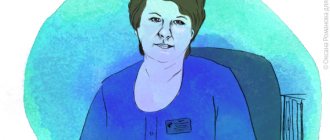Otolaryngologist for adults and children
Manevich
Igor Semenovich
Experience 26 years
Otorhinolaryngologist of the highest category, member of the European Rhinologic Society
Make an appointment
Eustachitis in an adult is an inflammatory process of an acute or chronic nature that occurs in the auditory tube. It is called Eustachian. The disease leads to impaired ventilation in the middle ear, causing severe hearing impairment. This disease is also known as tubo-otitis. It is considered the initial stage of acute catarrhal otitis. Usually the disease appears due to a respiratory infection that has spread so that mucus from the nasopharynx moves to the cavity near the eardrum. Inflammation can be right- or left-sided tubo-otitis, or already develop as bilateral eustachitis.
Symptoms and signs
Symptoms of eustachitis in adults are usually the following:
- increase in body temperature, fever;
- headaches, feeling of heaviness;
- ear congestion;
- tinnitus, ringing;
- temporary hearing loss, but it goes away with yawning or swallowing;
- ear pain that occurs with varying degrees of intensity;
- a feeling that liquid is overflowing (this is especially felt if you change the position of your head).
The symptoms of chronic tubo-otitis are almost no different from acute eustachitis, but they are less pronounced, but the disease is protracted. This situation arises if treatment of tubo-otitis was not carried out in a timely manner or if the patient did not complete treatment, and the inflammatory process remained in an advanced form. Due to the chronic form of the disease, the functionality of the auditory tube may not be restored. Inflammatory processes are less painful.
Do you have symptoms of eustachitis (tubo-otitis)?
Only a doctor can accurately diagnose the disease. Don't delay your consultation - call
How physiological is the sensation of tinnitus?
The causes of constant or periodic ringing in the ears can be pathological. So and physiological. Often people of different ages experience some ringing in the ears in complete silence; such ringing is normal and arises as a result of the functioning of the neurosensory system of the inner ear and cochlear organ. Physiological noise occurs in more than 90% of people, regardless of gender and age. Difficulties in assessing the intensity of physiological noise lie in the subjectivity of the assessment by each individual person. Usually a person adapts to such noise and does not pay attention to it at all, however, with the development of any pathological condition on the part of the neurosensory part of the hearing aid or any other, as well as with some vascular diseases, the intensity of tinnitus can increase significantly, which leads to to the formation of tinnitus symptoms.
Causes
Tubootitis is an infectious disease. It can be caused by streptococci, pneumococci, staphylococci, Haemophilus influenzae, as well as mycoplasmas, corynebacteria, etc. Eustachitis can also be caused by viruses. Most often these are adenoviruses, rhinoviruses, influenza virus, respiratory syncytial virus, measles, rubella, mumps virus, coronavirus, etc. The symptoms and causes of tubootitis are interrelated, so before selecting drops for eustachitis, the doctor first identifies the infection that caused this disease.
Also, a separate group consists of the causes of acquired type eustachitis. These include:
- deviated nasal septum;
- blockage of the nasal passage;
- chronic rhinitis and sinusitis;
- excessive blood flow to the nose.
There are also congenital causes. This applies to anomalies associated with the development of the nasal septum, cavity, as well as diverticulum of the Eustachian tube.
Routes of infection
The infection enters the nasopharynx and disrupts its microflora. It damages the mucous layers, passes into the Eustachian tube, and the tympanic cavity. In response to the reaction, the body produces antibodies that cause allergic reactions (swelling). Infections are transmitted by airborne droplets, that is, when talking with an infected person and staying in the same room. The contact route is also possible, that is, using things (for example, dishes, personal hygiene products) of a previously infected person.
Physiology of the process of occurrence of tubootitis
The middle ear is located in the temporal bone, between the external auditory canal and its internal section. It has two functional components - the tympanic cavity and the auditory (Eustachian) tube. The auditory tube connects the tympanic cavity with the nasopharynx, balances the pressure in the cavities of the middle ear, and participates in the functioning of the entire auditory system. It has a small diameter - approximately 2 mm. When the body becomes infected, the mucous membrane of the middle ear becomes inflamed, and the lumen of the auditory tube decreases. As a result, ventilation processes are disrupted - air passes into the tympanic cavity with difficulty or does not enter at all. Due to a long-term lack of air exchange and disruption of the natural drainage function of the auditory tube (the natural secretion secreted by the glands of the mucous membrane of the middle ear is normally evacuated into the nasopharynx through the auditory tube), stagnation of fluid occurs in the middle ear, which disrupts the normal functioning of the auditory system and is dangerous with the risk of developing infectious process in the tympanic cavity.
Risk factors
Unilateral or bilateral (bilateral) tubo-otitis may appear due to the following risk factors:
- pathologies of a chronic nature or that have recently arisen and interfere with normal air circulation (for example, a deviated septum, a tumor in the nose, enlarged ears);
- complications after allergic reactions;
- frequent colds, flu and illnesses caused by bacterial or fungal infections;
- chronic sinusitis or rhinitis;
- complications after tonsillitis;
- presence of polyps.
Treatment of tubo-otitis in adults should be based on the causes that caused the disease, since it is necessary to select remedies depending on the infection. Also, symptoms of eustachitis appear in people due to professional activities, this applies to those who, due to their work, are forced to often feel pressure changes, for example, swimmers and divers, pilots. You also need to take into account that the disease can appear due to injury or injury to the ear, as well as as a complication after surgery.
Why is there noise in my ears?
Reasons for the appearance of background sounds as a symptom of hearing loss:
- Sulfur plug is a quiet monophonic noise without focusing at one point, reminiscent of the sound of the surf. The plug rests on the eardrum - low frequencies, focusing at one point, when tilting the head, it is divided into 2 parts.
- The tumor makes noise, as if flowing along smooth lines in 2-3 ranges, a slight ringing may be mixed in.
- Exudative otitis - distortion of sounds, rings and makes noise in 2 ranges. This also applies to eustachitis.
- Water ingress: if there are a lot of metal salts - a barely audible, squeaking ringing, clay impurities - noise - periodic clicks, mainly when turning the head.
- Labyrinthitis is a booming noise.
- Decompression – floating sound effects with falling noise.
- Otosclerosis – quiet monophonic noises.
- Acoustic injuries - constant low-frequency hum.
Other diseases. Vertebral artery syndrome - rings shrilly, monotonously. Internal hydrocephalus of the brain: deep rich noise, possible hum; high intracranial pressure – smooth, quiet. Fatigue, low or increased hemoglobin, decreased immunity - the noise intensifies during mental activity and physical exertion. Taking antidepressants, narcotic and psychotropic drugs, schizophrenia, chemical poisoning - ringing intrusively, semantic hallucinations are possible (in the background they seem to be speaking unintelligibly en masse, the speaker's voice may split in two). Inflammation of the auditory and or facial nerve - squeaking. At high temperatures there are constant complex noise effects.
Colds in the cervical region, fragility of blood vessels - the sound effects are unpredictable. Head injuries - a low, monotonous hum. Oxygen starvation is a quiet hum. Constriction of the veins and arteries of the cervical spine - changeable noise. Thyroid dysfunction – effects are unpredictable. Diabetes mellitus is predominantly a rapidly rising and falling low-pitched noise. When a wasp stings, after a long allergic reaction - a piercing, loud, high-frequency ringing.
Diagnostics
How to treat tubootitis? Before choosing a treatment strategy, it is necessary to undergo diagnostics. First, the doctor examines the patient and listens to his complaints, reads the medical record. After this, the following procedures are carried out:
- otoscopy. Such an examination makes it possible to notice inflammation in the Eustachian tube even during the initial examination;
- computer, tone or voice measurement of hearing sensitivity;
- Ultrasound, MRI;
- taking a swab from the ear cavity and nasopharynx.
All of the above procedures can be completed at JSC “Medicine” (clinic of Academician Roitberg) in the central district of Moscow near the Mayakovskaya, Novoslobodskaya, Belorusskaya, Chekhovskaya, Tverskaya metro stations.
Treatment
To treat eustachitis, it is necessary to eliminate the causes of its occurrence. If necessary, the focus of chronic infection should be sanitized: remove the adenoids, perform a tonsillectomy, undergo systemic antibacterial therapy, restore air ventilation in the nasopharynx, correct the nasal septum, remove tumors.
Drug treatment removes swelling and stops inflammatory processes. For this, vasoconstrictor nasal drops and antihistamines are prescribed.
Myths and dangerous misconceptions in the treatment of eustachitis
Myth 1. Treatment is not necessary. Many people prefer to wait out the acute period of inflammation, hoping that the pathology will disappear on its own. In fact, this will cause serious complications.
Myth 2. You definitely need to take antibiotics. If the disease is caused by microbes, then antibacterial therapy will be needed. If eustachitis appears due to a fungal or viral infection, then antibiotics will not be able to cope with them.
Myth 3. Warming up will always help. In fact, warming up is a controversial issue. Because of it, blood flow increases, and the infection spreads faster. This is why you should not warm up the ear during the acute stage of inflammation.
Prevention
For prevention it is necessary:
- strengthen the immune system (hardening, taking vitamin-mineral complexes, eating garlic or keeping it near you);
- protect yourself from foci of infection (vehicles, public places);
- wear a medical mask (change it every couple of hours during the epidemic);
- Treat colds promptly.
These measures will help avoid the occurrence of inflammatory processes in the Eustachian tube.
Pathological causes of tinnitus
A number of diseases can cause tinnitus to increase in intensity. The duration of the ringing can also vary significantly, from rare transient noises to a constant pronounced ringing that causes discomfort in the patient. The most common cause of ringing in the ears is a sharp loud sound, as a result of which the sensory apparatus of the inner ear does not have time to rebuild and adapt to the loud sound, thereby forming a transient or short-term ringing in the ears. Which we've all heard, it's like a squeak. This form is especially common among people who work in loud environments, for example: guitarists, rock musicians, DJs and hosts of festive events. However, severe tinnitus often occurs in one ear and goes away on its own.
The following more serious causes of pathological ringing in the ears can be diseases such as:
- Otosclerosis is a disease in which bone tissue grows in the cavity of the ear canal.
- Infectious and inflammatory diseases of the outer, middle and inner ear.
- Arterial hypertension is increased blood pressure in the vessels of the brain.
- Taking medications with an ototoxic effect.
- Atherosclerosis of cerebral arteries.
- Osteochondrosis.
- Injuries and contusions of the head and hearing organ.
- Blockage of the auditory canal.
All of the above diseases often lead to tinnitus, which becomes a painful companion for the patient. Tinnitus can occur with preserved hearing or be accompanied by a decrease in hearing.
Otosclerosis
If you are bothered by a constant ringing in the ears and head, the causes of which remain unclear, then most likely it occurs due to the proliferation of bone tissue among the structures of the inner ear. This process is called secondary ossification and leads to the gradual formation of otosclerosis. The disease occurs more often in females and does not depend on age. Often, with otosclerosis, patients, in addition to noise and ringing in the ears, experience sensorineural hearing loss.
With otosclerosis, tinnitus is the first symptom and appears much earlier than the development of sensorineural hearing loss and other symptoms, however, the diagnosis of this symptom is much more difficult, since the symptom is purely subjective.
Infectious and inflammatory diseases of the ear
Diseases in which inflammation occurs in the ear are called otitis media. Otitis can be of different localization, and therefore external, middle and internal otitis are distinguished. If you are wondering why there is a ringing in your left ear or why there is a ringing in your right ear, then the cause may be a history of otitis media in the past. Ringing most often results from damage to the inner ear. As a result of inflammation, especially if it is accompanied by a purulent process, disturbances in the hydrodynamic physical parameters of the transmission of sound information are formed. Such changes occur only on the side of the affected ear, which ultimately leads to the unilateral occurrence of the symptom of ringing in the ears. Tinnitus associated with previous inflammation can develop at a young age, and the interval between otitis media and the manifestation of ringing can be very long, it is for this reason that it is important to give due importance to a thorough collection of anamnesis of the disease.
Hypertonic disease
The cause of constant ringing in the ears on both sides can be significantly increased pressure, this is especially true for people over 50 years of age. According to statistics, more than 70% of patients with hypertension have a symptom of tinnitus, and in a permanent form. If the cause of ringing in the ears is arterial hypertension, then you should not delay contacting a specialist for advice and specialized treatment. Typically, tinnitus occurs when blood pressure is high. Moreover, the leading role in this situation is played by the level of systolic pressure, which corresponds to myocardial contraction. Often, ringing in the ears or in a separate ear is associated not only with hypertension. But also with concomitant atherosclerosis of the vascular wall.
Osteochondrosis
Osteochondrosis of the cervical spine is often accompanied by ringing in the ears. The mechanism for the formation of this symptom in osteochondrosis is a significant bending of the vertebral arteries, which feed the pyramid zone and the cochlea of the inner ear. With osteochondrosis, vertebrobasilar insufficiency develops, which is also accompanied by a feeling of spots flashing before the eyes and dizziness. In some cases, with vertebrobasilar insufficiency, tinnitus may precede a short-term loss of consciousness.
Atherosclerosis of cerebral arteries
A constant ringing in the ear on the left side of the head or a similar noise on the right side may indicate serious atherosclerotic changes in the cerebral arteries, namely in the internal carotid and middle cerebral arteries. With the development and progression of atherosclerosis, cholesterol accumulates under the inner layer of blood vessels - the endothelium, which in turn leads to compaction of cerebral vessels and a significant decrease in the elasticity of the vascular wall. Even with moderately elevated blood pressure in combination with atherosclerosis, tinnitus may occur. Particularly characteristic is the one-sided manifestation of noise during the formation of atherosclerotic changes in vessels anatomically close to the pyramid of the inner ear.
Use of medications with side effects
Taking some drugs with ototoxic effects can cause temporary or permanent symptoms of tinnitus. The most common drugs that have such serious side effects include:
- Group of antibacterial drugs of the tetracycline series;
- Some psychotropic drugs - Haloperidol, Levodopa, Nicotine, Marijuana;
- Anti-inflammatory drugs of a steroid nature - Prednisolone;
- Diuretics such as Furosemide (Lasix);
- Cardiac glycosides – Digitalis and non-selective beta blockers.
The use of tetracycline antibiotics in early childhood or non-compliance with dosage can lead to dystrophic changes in the cochlear apparatus and brain nuclei responsible for analyzing sound stimuli.
Blockage of the ear canal
The mechanism of perception of sound stimuli in humans is a complex mechanism in which mechanical and chemical processes are involved. If an obstacle occurs in the path of a sound wave, not only sound distortion may occur, but also noise may be generated due to the resonance mechanism. Any foreign body or substance in the area of the external auditory canal can cause tinnitus. Often noise occurs in children when liquid or solid particles of dust or sand enter the ear. Small insects may also enter the outer ear, which will also lead to the formation of ringing in the ear. With insufficient hygiene and treatment of the external auditory canal, the formation of cerumen plug is possible. Which can also cause noise in the ear on one side.









